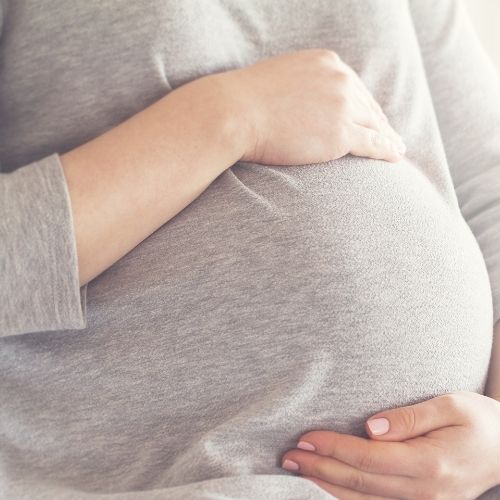Rain can trigger headaches by different mechanisms such as changes in humidity levels, temperatures, and atmospheric pressure. Weather changes such as rain are known triggers for migraine and sinus headaches.
The following are the most common links between rain and headaches:
1 . Change in humidity levels.
When it rains, the air around you becomes more saturated with water. The increased water vapor in the surrounding air is called high humidity.
The longer and the heavier the rain, the more humidity levels are.
According to several studies, increased humidity is a trigger headache. For example, This study found that rain and high humidity conditions triggered headaches in about 31% of the people included in the study.
Indoor humidity during rain and headache.
Even if you didn’t go out during reading, you might still get headaches because of the indoor humidity.
Although the rain causes outdoor humidity mainly, the inside of your home is also affected.
Humidity extends to the indoors because you can’t simply prevent the outside air from entering your home.
The humid outside air enters the inside through door cracks, window gaps, and during the opening and closing of doors.
So, humidity during rain can trigger your headache even if you don’t go outside.
Moreover, humidity may also trigger allergic conditions such as allergic Sinusitis, asthma, and others which may contribute to headaches.
2. Changes in atmospheric pressure.
The air around our planet exerts pressure on our body systems. The atmospheric pressure and rain are closely related to each other.
Low atmospheric pressure often leads to rain. Moreover, after rain starts, the atmospheric pressure usually rises again.
The up and down changes in the atmospheric pressure can trigger headaches.
One Japanese study found that the sales of headache medicines are linked to changes (lowering) in the atmospheric pressures (reference).
Another study found that even small changes in atmospheric pressure (which is linked to rain) may trigger famous types of headaches such as migraine.
3. Temperature changes.
Raining is also associated with significant temperature changes due to the absence of sun and the rise of humidity.
Temperature changes are also a known trigger of headaches. For example, the sudden shift of temperatures during a rainy day may trigger your headaches.
For example, This study (screenshot) found a significant correlation between temperature changes and migraine headaches in 27% of the patients included in the study. https://thejournalofheadacheandpain.biomedcentral.com/articles/10.1186/s10194-015-0533-5

Changes in temperature during rainy days also affect people who don’t have migraine. According to this study, both people with migraine and non-migraine headaches are affected by temperature changes (reference).
4. Triggering of sinus headaches.
Sinusitis is an inflammation or swelling of the tissues lining your sinuses. The sinuses are air-filled spaces inside your skull.
In most cases, Sinusitis is caused by multiple factors and not a single cause. Common causes and triggers include:
- Infection with bacteria, viruses (common cold), or fungi.
- Allergies such as hay fever.
- Sudden temperature changes.
- Humidity changes.
- Nasal polyps deviated septums.
During a rainy day, your sinus headache may increase due to the ability of rain to trigger the inflammation.
Rain alters humidity, temperature, and atmospheric pressure changes. All these factors trigger sinus headaches.
Also, air-born allergens such as dust mites, pollens, and spores may flourish during a rainy day, contributing to sinus headaches.

Sinus headache symptoms:
- Headache is usually located in the front of the head (forehead), around the eyes, cheeks, or nose (see the image above).
- The headache increases when you lean forward.
- The headache is often associated with a blocked nose and nasal discharge.
- Continous sense of mucous secretions in the throat (post-nasal discharge).
- Difficulty breathing through the nose.
- Altered (decreased) smell and taste sensation.
- Ear pain.
- Cough in some cases.
- Bad breath and mouth odor.
5. Rain and migraine.
A migraine is a common form of primary headache. It causes throbbing or pulsating headaches of moderate to severe intensity.
70% of migraine sufferers feel the headache on one side. Less commonly (30%), migraine headaches are on both sides of your head (bilateral).
Migraine is prevalent, affecting about 15% of people (reference). You may have a mild migraine, and you don’t know.
More than half (53%) of migraine sufferers report weather changes to trigger their migraine headaches (reference).
Symptoms:
- The typical migraine attack is often preceded by abnormal affective symptoms such as repeated yawning, mood changes, food cravings, or neck stiffness.
- 25% of patients with migraine may experience abnormal visual or hearing symptoms (bright flashes of light, ringing of ears, noises, etc.).
- The headache is throbbing or pulsation on one side of the head in 70% of the cases.
- It lasts at least 4 hours, and a single attack may last for days.
- It can be associated with nausea or vomiting.
- After the headache ends, you may feel exhausted.
The migraine triggers are multiple. Common triggers include emotional stress, hormonal disturbances in women, fasting, weather changes (hot, cold, or rainy weather), etc.
How is a migraine diagnosed?
To diagnose migraine, you will need a visit to your doctor. Unfortunately, no laboratory or imaging test can directly diagnose migraine.
Your doctor will diagnose the condition based on the specific characteristics of the headache after excluding other causes of the headache.
Learn more about migraine causes, symptoms, and triggers HERE.

